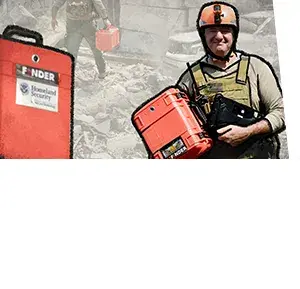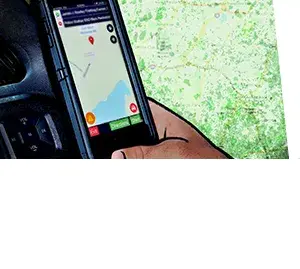The Department of Homeland Security Science and Technology Directorate (S&T) works closely with first responders to improve their safety and effectiveness—ensuring our nation’s law enforcement, fire protection, and emergency medical services are well-equipped to provide aid in times of crisis. First responders are the real-life superheroes who rush towards danger rather than away from it. They protect and serve. They expect the unexpected. And though they may not have super powers or wear capes, they do have some serious back-up support in the form of S&T innovation. In addition to their skills and training, first responders rely on various technologies developed by S&T to help them save the day.
Our latest edition of the Impact Series highlights various ways our research and development efforts impact emergency response situations. Read several compelling scenarios that showcase S&T innovation in action. The featured technologies are also mentioned briefly below. There are many more projects currently in development or already transitioned to commercialization, making a difference throughout our nation. S&T proudly partners with first responders through the First Responder Resource Group (FRRG), an emergency response and preparedness think tank. FRRG guides research and development efforts by seeking out the expertise of experienced responders from a broad range of disciplines, government levels, and geographic regions.
Life Saving Gear Helps Responders Take the Heat

- Burn Saver Thermal Sensor continuously monitors heat exposure, logging temperature data in real time. The wireless sensors weigh a mere 12 ounces and run on a single AA battery.
- RedZone™ Particulate Blocking Firefighter Turnout Gear prevents toxic substances in the air from entering through vulnerable spots, like arm and leg holes, and depositing on the skin.
- Flex-Tuff Improved Firefighter Structure Gloves protect hands with infrared, thermal reflective, and flexible materials that provide enhanced dexterity, water repellency, and fire resistance.
- Precision Outdoor and Indoor Navigation and Tracking for Emergency Responders (POINTER) sends responders' coordinates on the X, Y, and Z axis to a nearby remote transmitter, allowing command post to know everyone’s exact location.
Enhanced Coordination Gets the Job Done More Efficiently

- Information Sharing Assessment Tool (ISAT) is a free, online service that provides an objective picture of current capabilities and gaps related to governance, standard operating procedures, technology, training, and usage.
- Team Awareness Kit (TAK) system enables responders in the field to have greatly enhanced situational awareness by tracking team members and sharing encrypted data such as text, photo, and video.
- send a mass notification to citizen mobile devices using the Federal Emergency Management Agency (FEMA).
- Integrated Public Alert & Warning System (IPAWS) sends mass notifications to citizen mobile devices. This FEMA service is supported by S&T training guidance for alert originators.
- Finding Individuals for Disaster and Emergency Response (FINDER) technology uses low-power microwave radar able to detect a heartbeat beneath 30 feet of rubble.
Easy Access to Information Boosts Operational Readiness

- QuickRoute mobile application calculates the best directions for driving to the scene of an incident by tracking real-time traffic, weather, and construction, as well as hazards particular to emergency vehicles such as low overpass clearance.
- HAAS Alert Collision Prevention for Emergency Responders sends smartphone notifications to alert nearby drivers of approaching emergency vehicles and help prevent car accidents while responders are on their way to an incident.
- Handheld Explosives Trace Detectors (HETDs) have an extensive explosive library and require no assembly, enabling rapid threat characterization.
S&T is the primary research and development arm for DHS’s operational components and the nation’s first responders. S&T helps improve the safety and effectiveness of homeland security professionals by developing innovative solutions with public and private sector partners. Our approach involves:

S&T relies on partnerships with industry, academia, and technology developers to continue providing next-generation solutions that improve responder safety and effectiveness. If you’re interested in helping strengthen the nation’s homeland security, visit our Work with S&T page to discover the many ways to work with S&T. Then, check out the rest of our website and follow S&T on Facebook, Instagram, X, YouTube, Instagram, and LinkedIn for the latest updates on our work.

